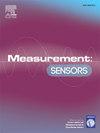Human-machine interaction in mechanical systems through sensor enabled wearable augmented reality interfaces
Q4 Engineering
引用次数: 0
Abstract
The research improves mechanical systems by using wearable sensor-based Augmented Reality (AR) interfaces for better Human-Machine Interaction (HCI). Industrial AR systems currently face problems created by their static programming methods along with delayed responsiveness and restricted sensor collectability and insufficient wireless throughput that results in system inefficiency and elevated stress on users. A new wearable AR system using gloves with haptic feedback and flex sensors with Inertial Measurement Units provides precise gesture-control while displaying real-time contextual information. The dynamic gesture recognition system uses Random Forest as its lightweight machine learning model to achieve 93.4 % accuracy in mapping gestures to command sequences which represents a 14.6 % enhancement above conventional static models. The system leverages Edge Computing for low-latency processing (average latency <47 ms) and cloud-based analytics for predictive maintenance insights. The proposed setup demonstrated an enhanced industrial performance in a simulated environment through error reduction by 22.3 % along with a 31.1 % increase in task speed and a 27.8 % improvement in situational awareness recorded through NASA-TLX cognitive load evaluations. Findings prove that the system fills fundamental weaknesses with current AR-assisted industrial HCI systems by providing automatic adaptation features along with improved safety measures and precise operational capability.
通过传感器支持的可穿戴增强现实界面在机械系统中的人机交互
该研究通过使用基于可穿戴传感器的增强现实(AR)接口来改善机械系统,以实现更好的人机交互(HCI)。工业AR系统目前面临着静态编程方法带来的问题,以及响应延迟、传感器可收集性受限和无线吞吐量不足,导致系统效率低下和用户压力增加。一种新的可穿戴AR系统使用带有触觉反馈的手套和带有惯性测量单元的弯曲传感器,在显示实时上下文信息的同时提供精确的手势控制。动态手势识别系统使用随机森林作为其轻量级机器学习模型,在将手势映射到命令序列方面达到93.4%的准确率,比传统静态模型提高了14.6%。该系统利用边缘计算进行低延迟处理(平均延迟47毫秒),并利用基于云的分析进行预测性维护洞察。通过NASA-TLX认知负荷评估记录,该装置在模拟环境中通过减少22.3%的错误,提高31.1%的任务速度和27.8%的态势感知能力,证明了工业性能的增强。研究结果证明,该系统通过提供自动适应功能以及改进的安全措施和精确的操作能力,填补了当前ar辅助工业HCI系统的基本弱点。
本文章由计算机程序翻译,如有差异,请以英文原文为准。
求助全文
约1分钟内获得全文
求助全文
来源期刊

Measurement Sensors
Engineering-Industrial and Manufacturing Engineering
CiteScore
3.10
自引率
0.00%
发文量
184
审稿时长
56 days
 求助内容:
求助内容: 应助结果提醒方式:
应助结果提醒方式:


